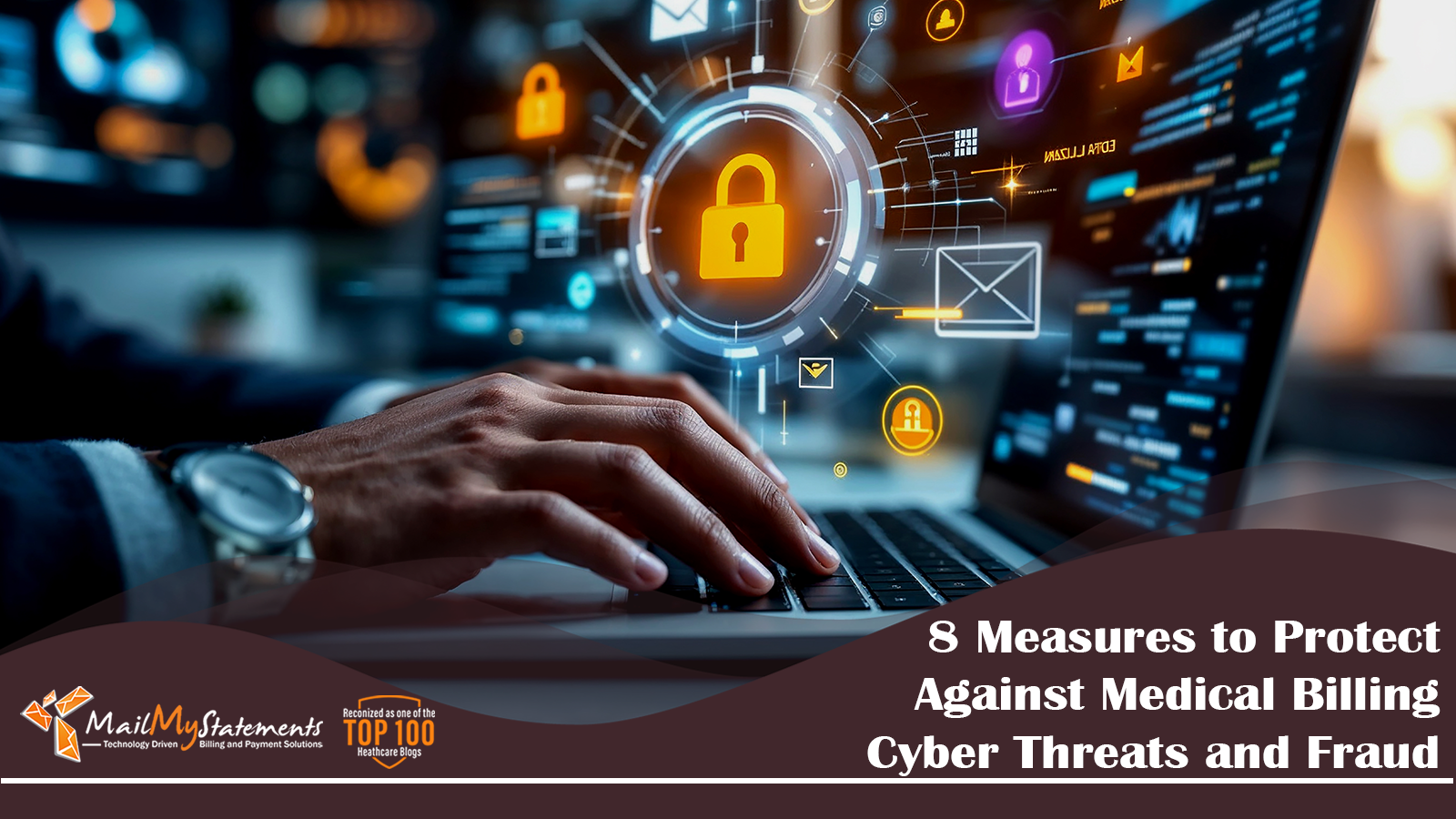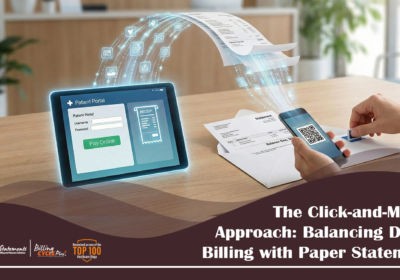8 Measures to Protect Against Medical Billing Cyber Threats and Fraud

While the benefits of bringing medical billing systems to digital platforms far outweigh any disadvantages, this shift has opened up more opportunities for medical billing fraud and cyber threats. Thankfully, advanced billing systems are well-equipped to monitor for and protect against fraudulent activities.
A successful cyberattack has the potential to disrupt operations, compromise sensitive patient information, and result in financial and even reputational damage, as we’ve seen in recent large-scale ransomware attacks on hospital systems in the United States. For payers, medical billing fraud is estimated to account for as much as 10% of all healthcare expenditures, costing them $100 billion each year.
Below, we discuss the types of threats healthcare billing systems face, along with proactive strategies to safeguard these systems while ensuring compliance with industry regulations.
Current Threat Landscape of Medical Billing Cyber Threats and Fraud
Medical billing systems are a virtual goldmine for cybercriminals. They contain sensitive patient data such as social security numbers, insurance details, credit card information, and medical histories, which can be sold on the dark web or exploited for fraud. Furthermore, billing operations are vulnerable to internal errors and external threats that could lead to fraudulent claims, overpayments, or data theft.
Common Medical Billing Cyber Threats
These types of cyber threats are experienced across all sectors, not just healthcare.
- Phishing attacks: Cybercriminals may use phishing emails to trick staff into sharing login credentials or downloading malicious software. From here, they can receive entry into sensitive billing systems.
- Ransomware: This type of malware encrypts the system’s data, holding it hostage until a ransom is paid. Healthcare organizations are prime targets for ransomware due to their dependence on timely access to patient data.
- Data breaches: Unauthorized access to medical billing systems poses a huge threat, potentially exposing patient data to cybercriminals.
Types of Fraudulent Activities
These types of fraud are more specific to the healthcare sector and are most likely to have a negative impact on payers.
- Upcoding and unbundling: Fraudulent billing practices like deliberately inflating codes or billing separately for services that should be grouped together.
- Identity theft: Not to be confused with identity theft that steals social security numbers or credit card information, this type of theft involves using stolen patient or provider information to submit fraudulent claims or obtain pharmaceuticals.
- Overpayments and duplicate claims: Errors in manual processes or systemic issues can result in duplicate claims or overpayments.
- Billing for services not rendered: Also known as phantom billing, this practice involves billing for visits or supplies that were not received.
Strategies to Safeguard Medical Billing Systems
Securing medical billing systems requires a multi-layered approach, combining technological solutions, employee training, and regulatory compliance.
Strengthen Access Control
One way to safeguard sensitive billing systems is through stringent access control policies. Adopt a “least privilege” approach, restricting employee system access based on their specific roles, rather than allowing everyone carte blanche access to all aspects of the billing system. In addition, encouraging strong passwords and adding an extra layer of security through multi-factor authentication or, even better, zero knowledge authentication, will help ensure bad actors are not allowed access to sensitive patient information.
Use Encryption and Regular Backups
Encryption ensures that even if stolen, your data remains unreadable and unusable to unauthorized individuals. It is crucial to encrypt not only stored data but also data that is transmitted across networks. Regular data backups are equally important, particularly in mitigating ransomware attacks.
Invest in Advanced Threat Detection Tools
AI-driven cybersecurity solutions offer robust protection against modern cyber threats. Employ tools that provide real-time threat detection, firewall management, and intrusion prevention. Track all activities within the billing system to detect abnormal patterns or unauthorized access attempts and protect all devices connected to the billing system through endpoint security, as they can serve as a gateway for cyber threats.
Conduct Employee Training and Awareness Programs
Many medical billing cyber attacks begin with human error. Educating your team about cybersecurity best practices can reduce the likelihood of accidental breaches. Train staff to identify phishing emails, malicious links, and suspicious requests and establish clear protocols for handling sensitive data and reporting security incidents. We go into more detail in our article on critical healthcare cybersecurity measures.
Enhance Fraud Detection Mechanisms
Implement robust fraud detection tools and practices to safeguard billing systems from fraudulent claims. Use software that automatically identifies irregularities or inconsistencies in claims before submission and ensure your billing system logs every transaction to create an audit trail, making it easier to identify and investigate suspicious activities. Regular reconciliation is another important step to cross-check payments and claims to catch errors, duplicate claims, or overpayments.
Regularly Update and Patch Software
Outdated software exposes your system to vulnerabilities that are easily exploited by cybercriminals. Ensure your medical billing software and office hardware are all regularly updated with the latest patches and security features. Consider automated patch management to streamline this process.
Comply with Industry Regulations
Non-compliance with regulations like HIPAA (Health Insurance Portability and Accountability Act) can result in steep penalties. Align your cybersecurity efforts with regulatory requirements.
- HIPAA: Protect patient information by encrypting data, securing access points, and conducting regular audits of your systems.
- PCI DSS: Ensure your billing system meets PCI DSS standards for secure credit card transactions.
- ISO 27001/2: Implement best practices for information security management, including risk assessments, access controls, and incident response planning.
- NIST 800–53: Align your billing systems with the comprehensive framework for securing federal information systems, including controls for confidentiality, integrity, and accessibility of data.
- HITECH: Secure electronic health information by meeting the expanded privacy and security requirements of the HITECH Act.
- COBIT: Use the COBIT framework to align IT governance with organizational objectives, focusing on risk management, compliance, and performance monitoring.
Perform Regular Security Audits and Risk Assessments
Regularly audit your medical billing system and conduct thorough risk assessments to identify potential vulnerabilities. This includes reviewing your cybersecurity policies and analyzing your current defenses against known threats. Third-party assessments are ideal, as these can provide an unbiased look into your organization’s cybersecurity measures.
The Role of Technology in Safeguarding Medical Billing Systems
Modern medical billing systems can integrate AI and machine learning technologies to identify patterns and irregularities in real time. For instance, AI can flag claims that seem inconsistent with the patient’s historical billing information, potentially reducing errors and fraud.
Cloud-based medical billing platforms also offer an additional layer of security by storing data in protected, offsite servers that employ advanced security features.
The Bottom Line
The healthcare industry is a prime target for cyber attacks and fraudulent activities, and medical billing systems sit at the heart of this vulnerability. However, proactive strategies like access control, encryption, fraud detection tools, and employee training can reduce risks.
MailMyStatements is committed to providing cutting-edge medical billing solutions designed with safety and efficiency in mind. As one of the first third-party vendors to offer HITRUST-certified patient billing, you can feel secure in knowing that we have a demonstrated commitment to protecting patients’ sensitive medical and billing information.
Get in touch with us today and learn more about how MailMyStatements’ BillingCycle Plus software can help streamline your patient billing and payment collection process with secure digital tools like eStatements, SMS text message payment alerts and reminders, and machine learning chatbots.
![]()



